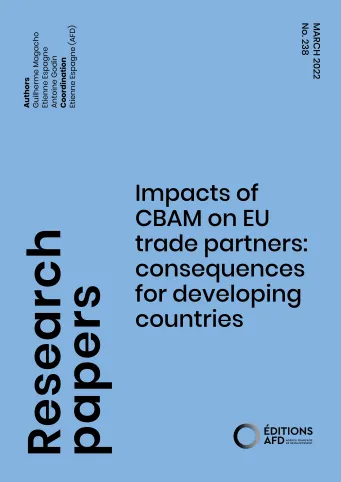Share the page
Impacts of CBAM on EU trade partners: consequences for developing countries
Published on

This article analyses the impact of the introduction of the Carbon Border Adjustment Mechanism (CBAM) on the European Union (EU) trade partners, focusing especially on its potential socio-economic and external consequences for developing and emerging economies. It uses trade data and Multi-regional Input-Output (MRIO) matrices to investigate the geographically and sectorally uneven distribution of CBAM’s impacts. The introduction of CBAM by the EU is under discussion, and most of the literature on the topic has analysed the consequences for the EU economies. However, this carbon adjustment mechanism, which seeks to reduce the incentives for firms to outsource their carbon emissions and promote a more generalized low-carbon transition, might disproportionally impact some non EU economies. Despite most carbon revenues would be generated by Russia, China and Ukraine, the degree of exposure of economies that export the CBAM products to Europe varies substantially, with many developing economies having more than 2% of their exports, and 1% of their production impacted by this measure. East European economies, mainly in the Balkans, as well as Mozambique, Zimbabwe and Cameroon, in Africa, are those where exports are the most exposed. In socioeconomic terms, we can also include Morocco and Tajikistan in the group of most exposed economies. CBAM is certainly an important step towards a European pricing carbon dynamics. Its implementation conditions may also promote a global (rather than local) lowcarbon transition if the carbon revenues generated by this mechanism are used to support the most impacted developing countries outside the EU.
Useful Information
-
Authors
-
Etienne ESPAGNE, Guilherme MAGACHO, Antoine GODIN
-
Coordinators
-
Etienne ESPAGNE
-
Edition
-
238
-
Number of pages
-
25
-
ISSN
-
2492 - 2846
-
Collection
-
Research Papers
